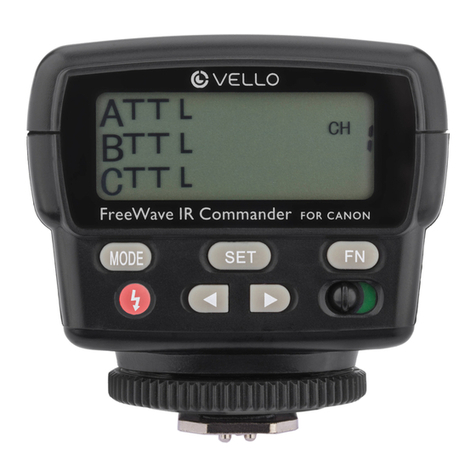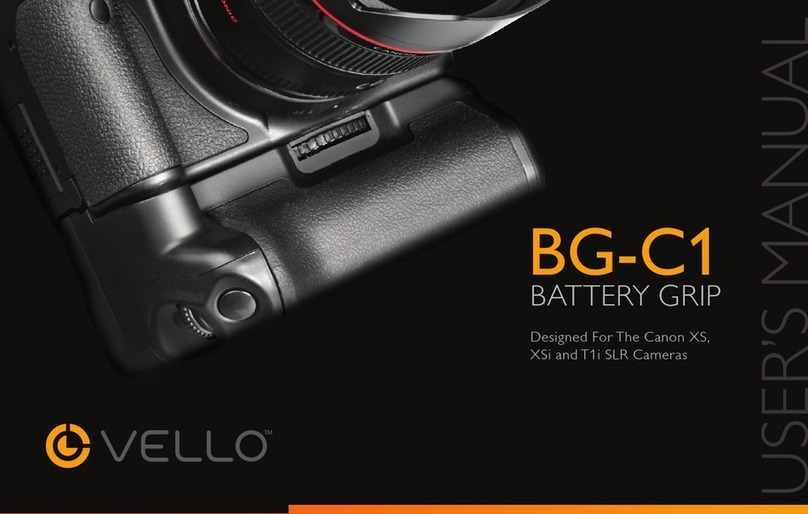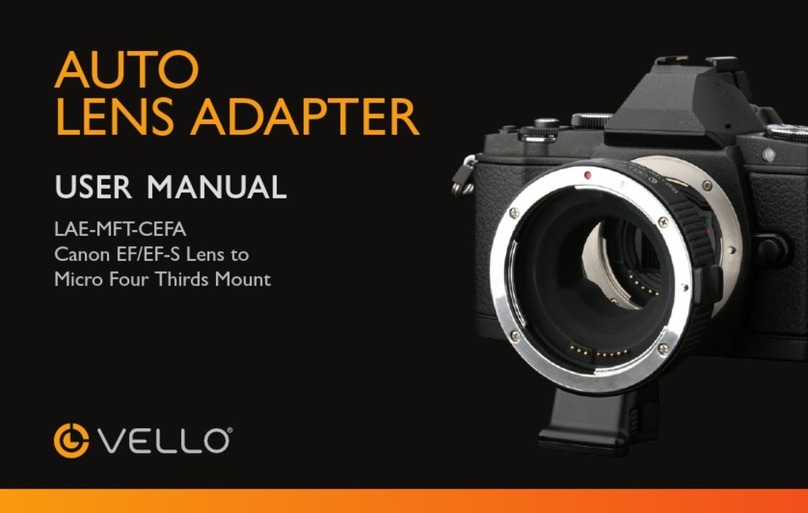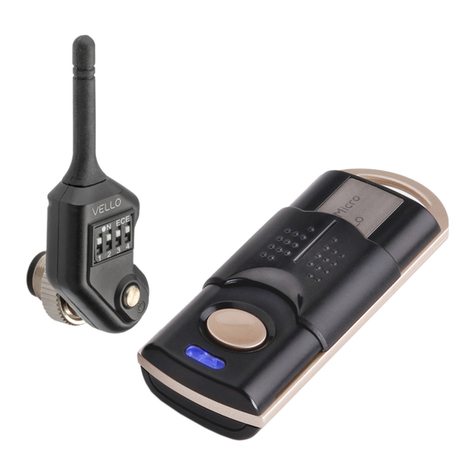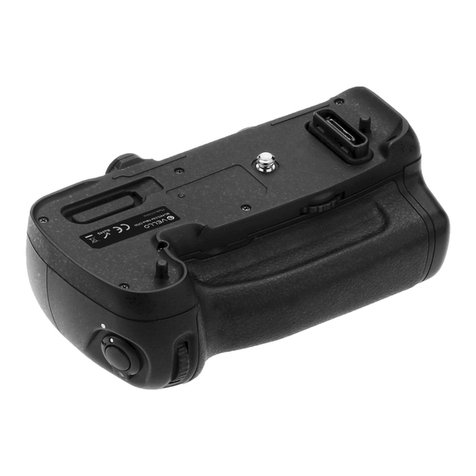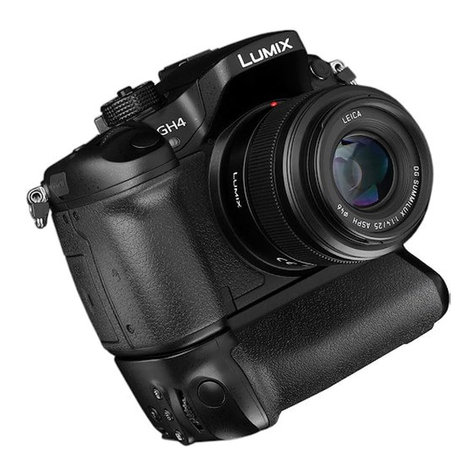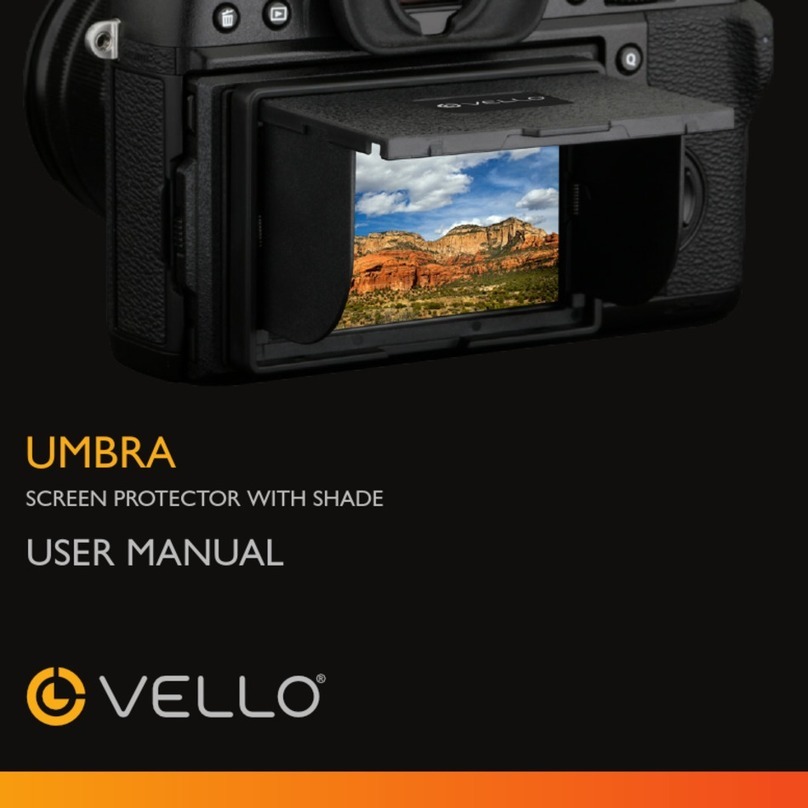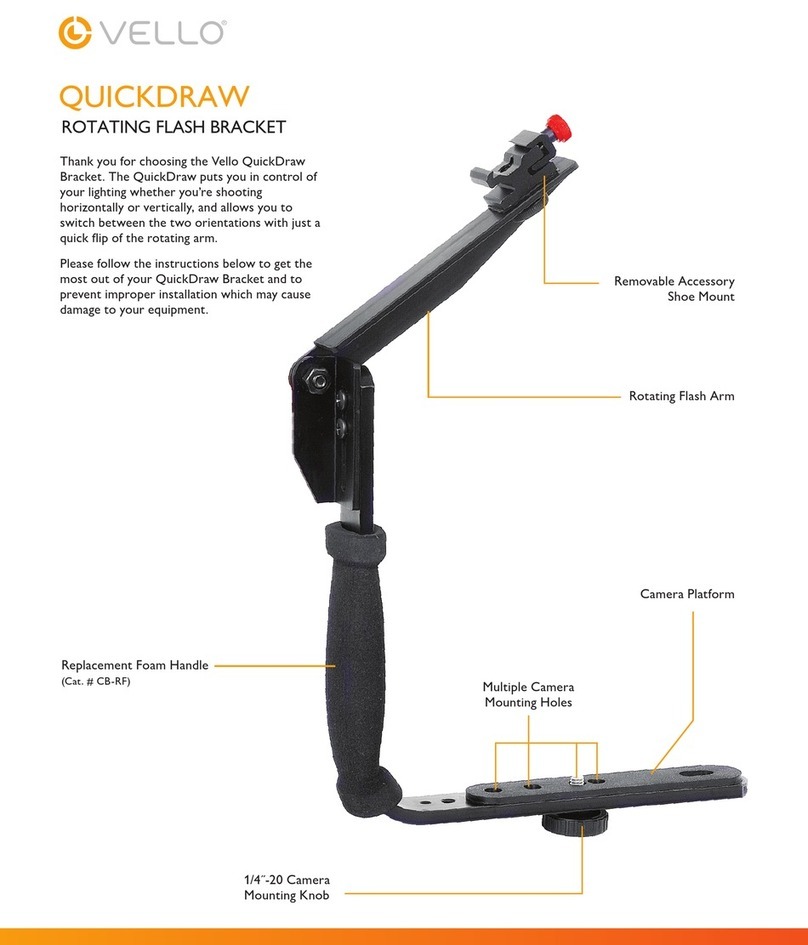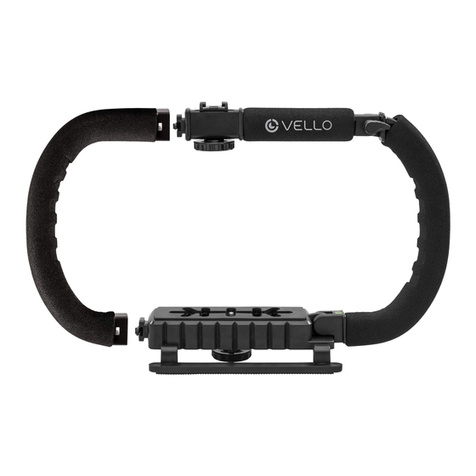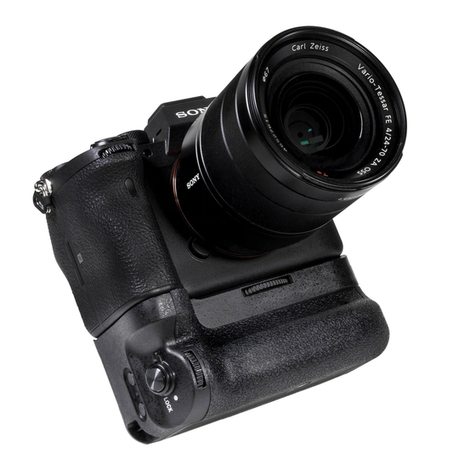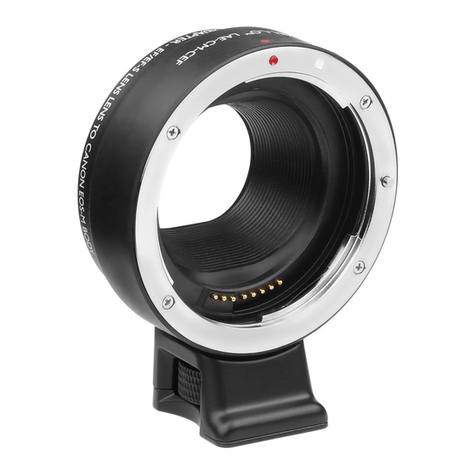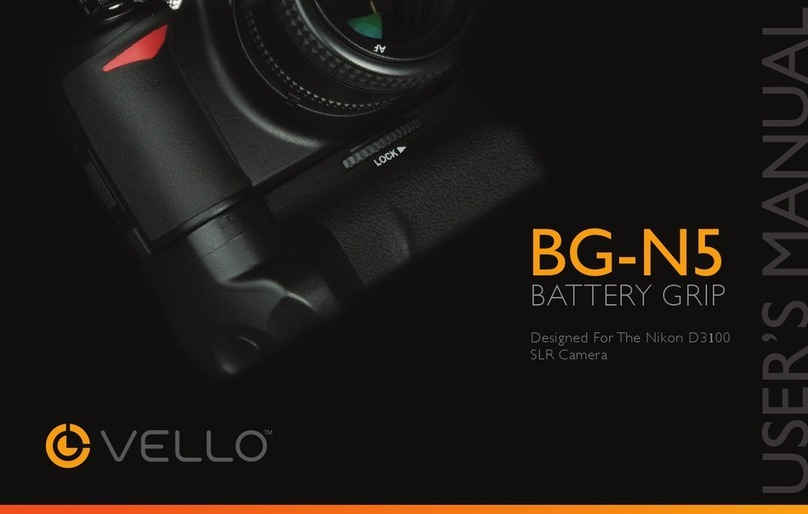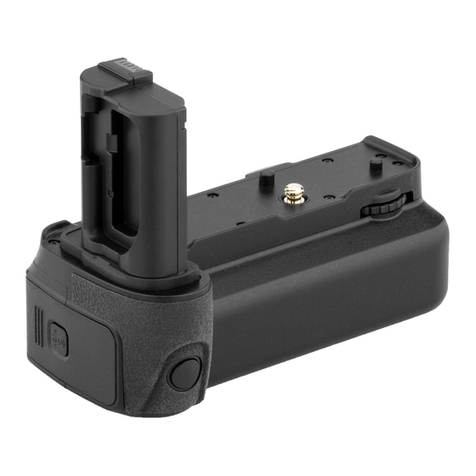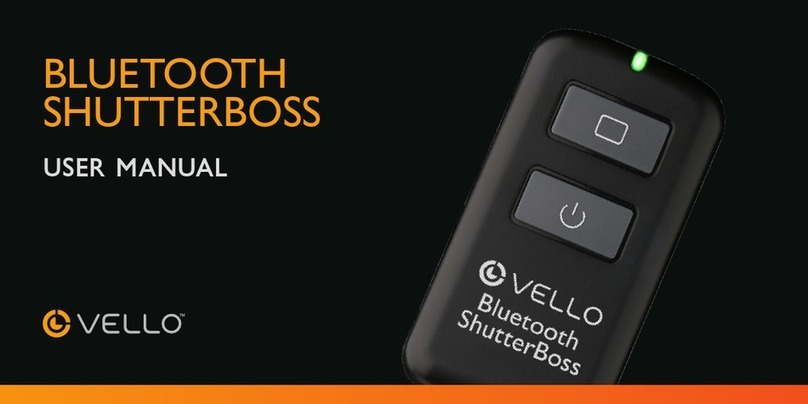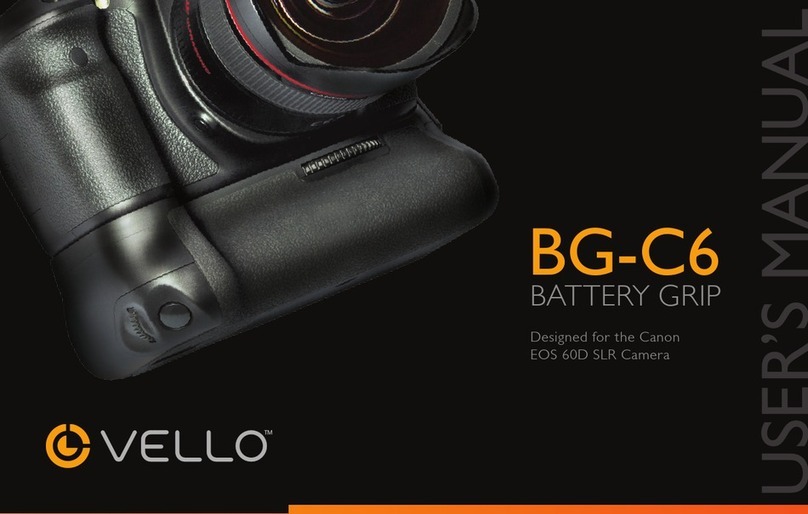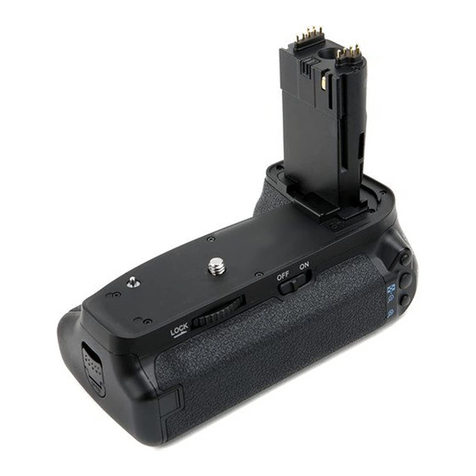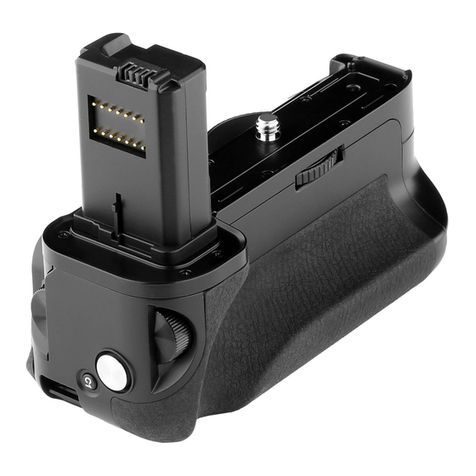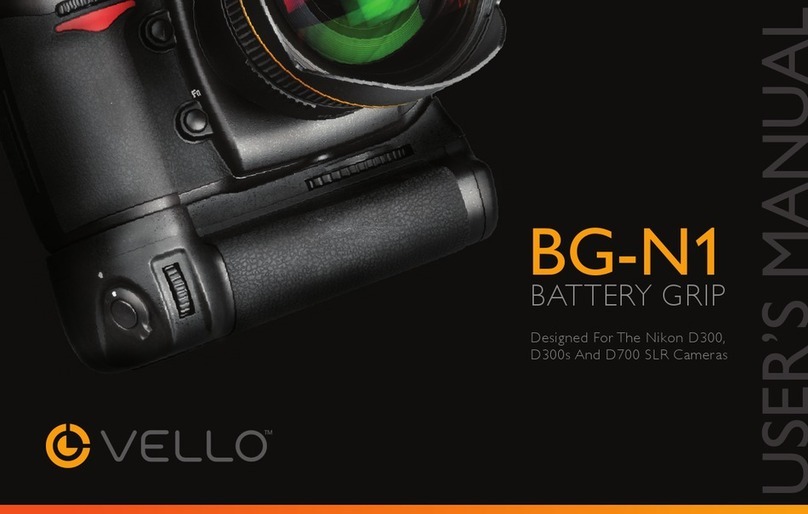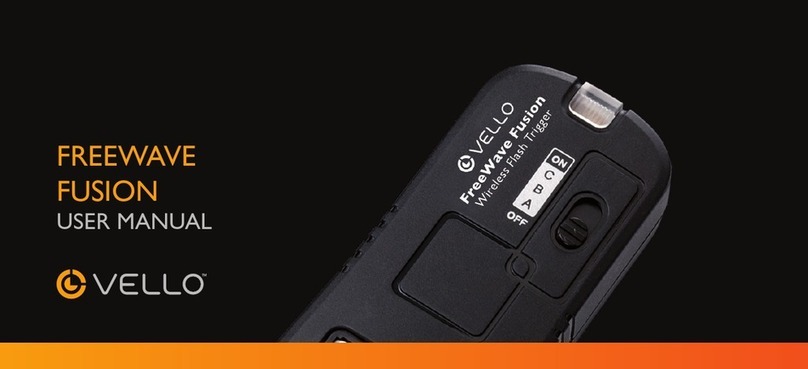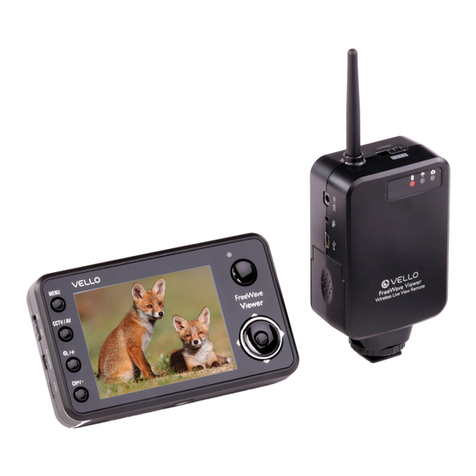
3
Thank you for choosing the Vello Wireless
ShutterBoss. It has a range of up to 250 feet
on 99 channels over the reliable FSK
modulated 2.4GHz frequency. But this
device is more than just a wireless shutter
release. It features many timer functions;
self-timer, interval timer, long exposure
timer, as well as controls for the number of
continuous shutter trips. The transmitter is
powered by two AAA batteries that can
provide the low power the device uses for
up to four years.
You can set the timer delays, exposure
times, and intervals up to 99 hours,
59 minutes, 59 seconds in one second
increments. You can select anywhere from
1to 99 continuous shots, or set the device
to take an unlimited number of photos.
The LCD screen also has a backlit function
for low-light conditions.
The Vello Wireless ShutterBoss is great for
time-lapse recording of blooming owers,
astrophotography, etc.
INTRODUCTION
2 27
DO NOT EDIT OR REVISE ARTWORK
We will not approve any artwork which has been altered by the vendor
FORWARD YOUR PROOFS
to mabel.li@asia.bhphotovideo.com
FOR APPROVAL BEFORE FINAL PRODUCTION
DO NOT BEGIN PRODUCTION WITHOUT PRIOR APPROVAL OF PROOFS
KEY FEATURES
26 3
FCC COMPLIANCE
Channel Selector: 99 possible radio
channels, plus one universal channel,
over the reliable FSK 2.4 GHz frequency.
No dip switches to set. One transmitter
can trigger multiple receivers.
Extended Range: up to 80m (250 ft.)
Multi-function: Trigger your camera
wirelessly or wired.
Versatile: One receiver works with
dozens of camera models. Just swap out
the camera release cable.
Dual-Function Release: Press halfway to
focus; press full to trigger shutter.
Delayed Release: Delay function gives
you extra time to get into position.
Multi-exposure: Take multiple shots with
one press of the trigger.
Interval control: Control the amount of
time between multiple shots.
Long Exposure: Control the length of the
exposure remotely.
LED indicators: Conrm pre-focus and
exposure.
Ultra-low power: AAA transmitter
batteries can last up to four years on
standby.
DO NOT EDIT OR REVISE ARTWORK
We will not approve any artwork which has been altered by the vendor
FORWARD YOUR PROOFS
FOR APPROVAL BEFORE FINAL PRODUCTION
DO NOT BEGIN PRODUCTION WITHOUT PRIOR APPROVAL OF PROOFS
This equipment generates, uses, and can
radiate radio frequency energy, and if not
installed and used in accordance with the
instructions, may cause harmful
interference to radio communications.
This equipment has been tested and found
to comply with the limits for a Class B
digital device pursuant to Part 15 of the
FCC Rules. These limits are designated to
provide reasonable protection against
harmful interference in a residential
installation.
There is no guarantee that interference will
not occur in a particular installation. If this
equipment does cause harmful interference
to radio or television reception, which can
be determined by turning the equipment
ON or OFF, the user is encouraged to try
to correct the interference by one or more
of the following measures:
1. Reorient or relocate the
receiving antenna;
2. Increase the distance between
the equipment and the receiver.
This device complies with Part 15, Subpart
B, Class B of the FCC Rules. Operation is
subject to the following two conditions:
1. This device may not cause harmful
interference;
2. This device must accept any
interference received,
including interference that may cause
undesired operation.
Any changes or modications (including the
antennae) made to this device that are not
expressly approved by the manufacturer
may void the user’s authority to operate the
equipment.
